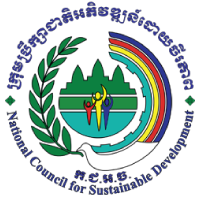Economic
Measure income and access and management of natural resources as a source of income as well as access to loans and market.
Infrastructure
Measure infrastructure and location, access to energy, water and sanitation, input for livelihoods, communications technology, early warning system, and physical structure to protect natural hazards.
Social
Measure access to education, information, health care, food/ nutrition security, social mobility, migration, social safety net, GBV and preparedness.
Institutional
Measure participation in decision-making process, response by public institutions, disaster management plan and actions and roles of media.
Resilience index
Notes:
- Scoring 0.00: lowest
- Scoring 1.00: highest
Graphique location of the study
Overall
Resilience indicators
Economic Resilience
Most Cambodian women stand at the margin of vulnerability.While men have withstanding capacity at 0.61, women's economic resilience is only 0.59. The study found that women have almost equal roles in managing own finance, but their incomes are not stable and sufficient to be resilient. Women's income is 0.08 lower than men. Access to stable sources of income is scored only at 0.35. Access to formal and informal loan is quite accessible (women: 0.61). Even access to market is relatedly high, women have less capacity to access to market compared to men. Constant decrease in access to natural resources as sustainable livelihoods creates greater challenges for rural population and migrant workers to be resilient to disasters, climate change impacts and economic crisis.
Infrastructure Resilience
Infrastructure supports resilience of Cambodia women and men at 0.56 and 0.58 respectively. Access to affordable energy for household consumption and adequate and safe water and sanitation are relatively moderate. However, the greatest challenges for Cambodians in building their resilience are lack of structural protection from natural hazards, access to safe areas, access to effective early warning system, access to input and equipment for livelihoods, and access to resilient housing. Access to reliable transport and communications technology were marked low.
Social Resilience
Cambodian women's social resilience is 0.54; while men is scored 0.57. Access to basic health service is high, equally for men and women. Food and nutrition security is moderate. The index shows men fear less of gender-based violence compare to women whom reported they fear and/or have seen an increase in GBV during and post- disaster. Gender-based violence is scored 0.65 for women, 0.74 for men. Access to formal and informal education, migration, and preparedness are low. Access to social safety/protection and supportive religious group are among the focuses to take action to improve resilience of Cambodian population.
Institutional Resilience
The Institution index is 0.56 for women, and 0.61 for men. Women have less participation and decision making compared to men. This score is drawn from indicators on access to decision making, equal and just power, knowledge on disaster management plan and access to humanitarian assistance, supportive governance and supportive roles of media. The access to external assistance during and post disaster is very low. Disaster management plans are not mostly known by local people. The supportive roles of media in disaster management and climate change adaptation are also limited.
